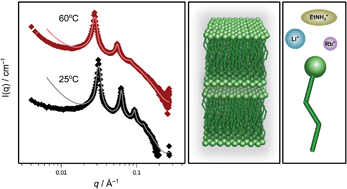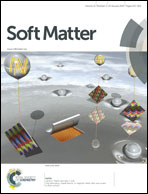Controlling the characteristics of lamellar liquid crystals using counterion choice, fluorination and temperature
Abstract
The characteristics of robust and highly ordered fluorinated lamellar phases were explored as a function of temperature, counterion identity and fluorination of the surfactant and co-surfactant. Structural and composition effects were probed using a combination of small-angle scattering of X-rays and neutrons, polarising microscopy and calorimetry. It was found that in general, the phases remained remarkably stable with increasing temperature, showing only moderate loss of order and increased membrane flexibility. By changing the surfactant's cationic counterion, it was possible to exert influence on both the shape of micelles formed and the inter-layer spacing of the lamellar phases obtained. Ordering and crystallinity of the lamellar membranes could be controlled by the level of fluorination of both the surfactant and co-surfactant. These results suggest that subtle manipulations of selected control parameters including co-surfactant selection and counterion choice can provide a high level of control over membrane spacing and local order within lamellar phases, providing guidance where these materials are used as templates.


 Please wait while we load your content...
Please wait while we load your content...